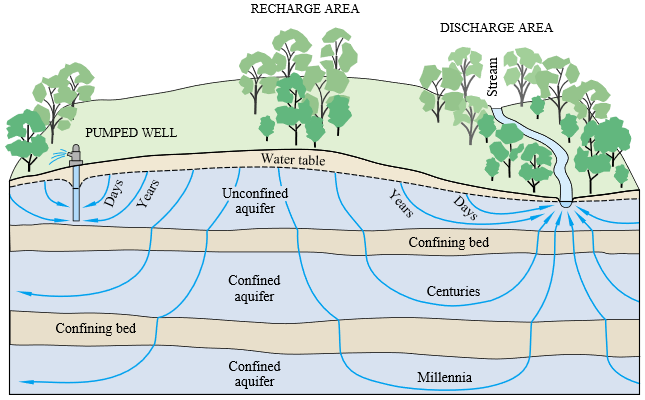Search for PHYLLANTHUS+SP.+(BRIDLE+LA+P.I.FORSTER +PIF17345) returned 618 results.
Refine results
Refine results
Section
- Species (495)
- Common Name (81)
- Site Page (17)
- Biodiversity Science project (15)
- Data provider (9)
- Institution (1)
Taxonomic rank
- Species (367)
- Variety (83)
- Unranked (25)
- Subspecies (7)
- Genus (6)
- Subvariety (3)
- Pathovar (2)
- Family (1)
- Form (1)
Image available
- Yes (187)
Lifeforms
- Fish (20)
- Insects and Spiders (18)
- Birds (6)
- Fungi (6)
- Mammals (4)
Taxonomic status
- Accepted (185)
- Heteroptypic Synonym (124)
- Synonym (73)
- Homotypic Synonym (60)
- unreviewed (22)
- Misapplied (16)
- Pro-parte Synonym (7)
- unreviewedSynonym (5)
- Inferred Accepted (2)
- Miscellaneous Literature (1)
Conservation status in Australia
- Endangered (2)
- Vulnerable (1)
Conservation status in NSW
- Endangered (2)
- Vulnerable (2)
- Extinct (1)
Conservation status in QLD
- Endangered (3)
- Vulnerable (2)
- Critically Endangered (1)
Conservation status in VIC
- Endangered (3)
- Extinct (1)
- Vulnerable (1)
Conservation status in TAS
- Rare (1)
Conservation status in SA
- Rare (1)
Conservation status in WA
-
Site Page: Meet iNaturalist Australia’s super users – Atlas of Living Australia
Posted on 21st October 2019 iNaturalist Australia, the Australian node of the global biodiversity platform, launched this month and is now integrated with the Atlas of Living Australia. iNaturalist Australia greatly improves the ALA’s ability to enable users to upload sightings and identify species. It provides an Australian gateway to iNaturalist for people to share findings with biodiversity-loving people across the globe...
-
Biodiversity Science project: Northwest Wisconsin Groundwater Monitoring Project
According to Wisconsin Department of Natural Resources (WDNR) well construction reports (http://prodoasext.dnr.wi.gov/inter1/watr$.startup, accessed 23 October 2017), residents within eleven northwestern Wisconsin counties obtain their drinking water from over 56,000 wells, including more than 48,000 private wells that are not regulated under the federal Safe Drinking Water Act and have no routine monitoring requirement...

-
Site Page: Meet Caitlin – An ALA Indigenous Internship student with a flare for coding – Atlas of Living Australia
Posted on 10th February 2023 Across summer 2022-23, the ALA hosted two Indigenous Internship students as part of the National Collections and Marine Infrastructure (NCMI) Indigenous Scholarship Program. Celebrating International Women and Girls in Science Day, we’re profiling Caitlin Ramsay! Caitlin joined the ALA Science and Decision Support team during her internship, where she investigated the distribution of invasive species across Australia over time...
-
Site Page: Brisbane City Council selects ALA for biodiversity data management – Atlas of Living Australia
Posted on 30th July 2018 The largest local government in Australia, Brisbane City Council, has chosen the Atlas of Living Australia as its approved corporate platform for environmental data storage, collection and analysis. Local governments own a large amount of biodiversity and environmental data. Data is frequently collected for waterway management and conservation programs, surveys for development sites, and environmental impact studies, and many other purposes...
-
Site Page: Indigenous Ecological Knowledge – Atlas of Living Australia
In partnership with Indigenous communities working on Country, the ALA is exploring the role of information management platforms in bridging the gaps between traditional and western science knowledge for plants and animals and supporting the health, wellbeing and empowerment of Aboriginal and Torres Strait Islander peoples...
-
Site Page: ESA Conference 2021 – Atlas of Living Australia
Posted on 16th November 2021 As we prepare for ESA2021 'Renewal', we share some insights from four ALA presenters: Jessica Fenker, Nat Raisbeck-Brown, Donald Hobern and Dax Kellie. We also hear about the exciting work of our friends at EcoCommons. This year marks the 61st Annual Conference of the Ecological Society of Australia, held on 22-26 November...
-
Site Page: Hunting the snark – Atlas of Living Australia
Posted on 19th March 2013 By Lee Belbin (Atlas of Living Australia) and Norm McKenzie (Department of Environment and Conservation, Western Australia) Mormopterus loriae at Dampier Peninsula 1977 Mangroves are a much maligned group of trees. Yes, most of the time they do not make for a comfortable human environment. In mangroves, you could be up to your neck in mud being bitten by clouds of sand flies and eyeing a 5m croc (who is eying you) in 48 degrees Celsius and 100% humidity...
-
Site Page: ALA-cited publications – Atlas of Living Australia
Have you used the ALA in your published (or soon-to-be published) research? Please let us know about it via this form. We’re interested in all types of research that the ALA supports including research publications in scientific journals, reports, book chapters, theses, as well as websites and apps. Online bibliography This bibliography provides a list of known publications that have utilised data in the ALA or ALA infrastructure to support their research...